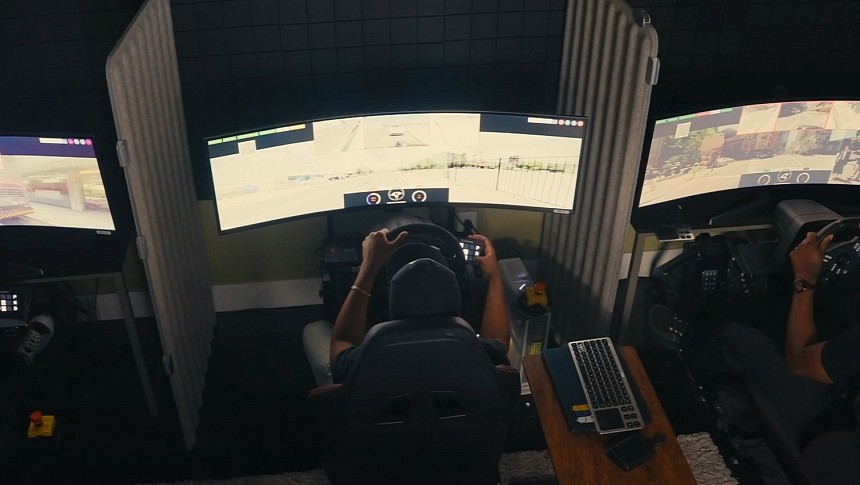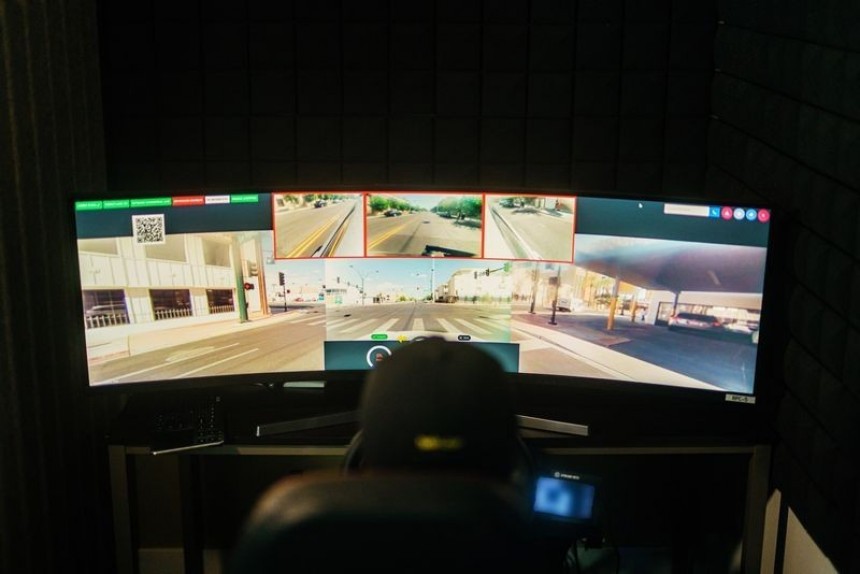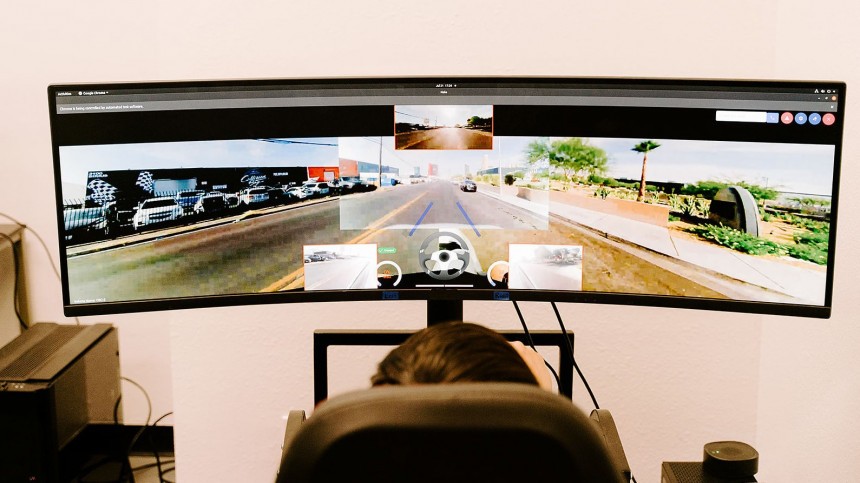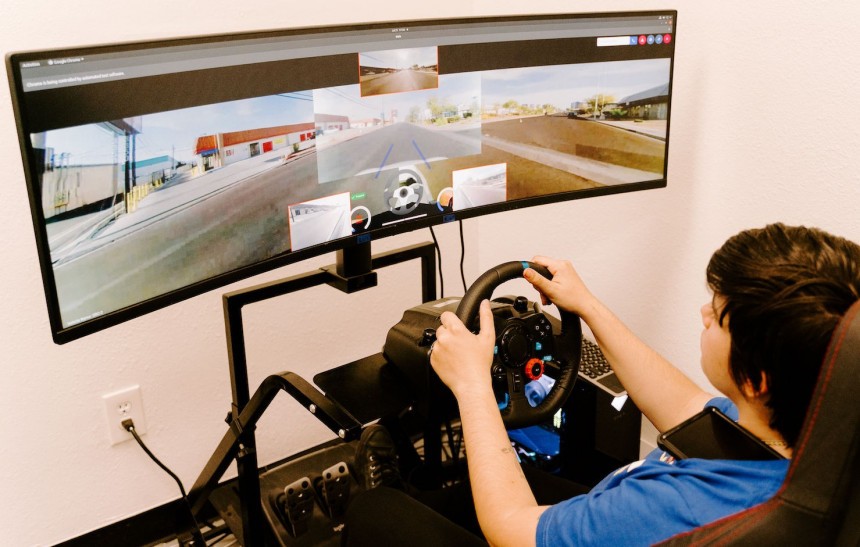"Self-driving cars will steal millions of jobs!" and "I don't trust a car that drives by itself" are the most common complaints I hear when talking about autonomous driving. Maybe Halo.Car's idea will calm down the naysayers. And maybe remote-piloted vehicles are a better approach than Tesla's and others' full self-driving systems. Just maybe.
I remember when the car engineer in me first learned about the ABS and the ESP and all the following electronic safety systems adopted by the industry. They were meant to make cars much safer. And they surely had and have a major role in slashing the number of road accidents.
Did you know there are over 2 million car crashes yearly in the US? While it seems a big number, it is less than 1% of the almost 300 million road vehicles roaming American roads and freeways every day. As a percentage, it is much lower than before the age of electronic safety systems. Without them, you can only imagine how high the number of car crashes would be.
Still, there is also a dark side of these "goddamn electronics," the way hardcore petrolheads refer to these systems. I even had the chance to experience the false sense of invincibility they give you if you think you're a very good driver. Fortunately, I did it on a racetrack. So, when I lost control of a curve because of my too-high speed in a bimmer, the result was only a "trip" on the gravel outside the tarmac.
No one was hurt; the car had only minor scratches because of the grit. In a few seconds, I was back on the track. With wounded pride, but an important lesson learned. And a much more understanding and respect for all the engineers who created these systems.
Besides, I could only imagine how tragic the situation could have been if I'd made that mistake on a real road, in real life, with real cars and real people in it. All because I tended to believe that the electronic "angels" allowed me to drive recklessly. So, maybe a number of car crashes out there are due because of overconfidence induced by electronic systems.
Anyway, I agree that having these systems on board is better than embracing the "we die like real men" bulsh*t I often see on so-called purist, no-electronics cars. And I also understand evolution. Nowadays, the new electronics slowly take control of the car and ease the stress for the driver. Step by step, we're heading toward autonomous cars. With pros and cons, of course.
Almost ten years ago, I had the chance to drive one of the first cars on the market (coincidentally, another bimmer…), allowing almost a self-driving car experience on the highway. It had a radar that could slow down the car when approaching another car in front and then re-accelerate. It had an electronic system controlling the wheel and sensors to keep the car in its lane.
I didn't need to touch the acceleration or brake pedals. I only had to keep a hand on the wheel, just in case (there was a warning message anytime I didn't comply), but without the need to actually steer. The car basically drove itself for almost 200 km (125 miles) on the highway, with active cruise control set at 140 kph (87 mph).
Today this scenario is trivial for many new cars because these systems are already very popular. And some of them are even enforced by law. But ten years ago, this scenario was a little Sci-Fi, a little scary, a little exciting. Imagine what today's weird or too-damn-high-tech systems will be in five or ten years from now.
And yes, I'm talking about the sophisticated systems, comprised of many sensors and chips, developed to transform the cars we drive into cars that drive themselves. And go wherever we want them to go. Of course, the first name that comes to mind is Tesla's controversial Autopilot system.
But remember that every major car manufacturer has a similar system in the works or on some models in different stages of development. Even ridesharing companies and start-ups are using real-life self-driving cars in all sorts of pilot programs. But do you know what they all have in common?
People's reluctance about self-driving cars. Never mind the few early adopters and tech enthusiasts who are blindly embracing the new tech. The vast majority of people don't trust self-driving cars and don't feel safe in a car that's meant to be safer than one driven by a human. Is this a paradox, or what?
Besides, the AI hype of the last months and all the fierce debate around it, with emphasis on the "Skynet scenario" (as in "the AI will destroy us, folks, it's the Terminator, run for your life!"), is simply fueling all the distrust and even hate related to autonomous driving.
This is where Halo.Car can fill an interesting gap. It is basically a more-than-your-usual carshare startup because of a very interesting idea. But first, could you tell me how you use a car-sharing service? Very simple, of course: you search on the app for the closest available car, then use it as you wish, and in the end, drop it somewhere.
You can also opt for a ride-sharing service, where you request a car to come where you are, pick you up, and take you from A to B as a passenger. This is more comfortable if you want to avoid driving. But what if you want to drive but are not in the mood to search for a car somewhere around you?
Well, hello, Halo.Car! It's sort of combining the car-sharing service – you can drive the car by yourself from A to B – with the ride-sharing service – it drops off the car wherever you are, then it picks it up when you're done with it. But here's the thing: they don't use replacement drivers. At least, not INSIDE the cars.
For the user, this system is just a little bit more comfortable, so I couldn't say one could see this idea as a game changer. But from a company point of view, this could be more profitable than a usual carshare business. You don't need to designate parking spaces, and you don't have to deal with the awful logistics of replacement drivers.
You only need some sensors, cameras, and special software on the cars, along with a headquarter filled with "gaming" stands, where "drivers" are remotely driving the cars to users. Yes, you heard me right: the cars are remotely controlled by some guys (or girls) like in a videogame, based on the images the onboard cameras send to big screens in front of the "virtual drivers."
I mean, this is so damn simple. Why didn't I have this idea before? Cough-cough, Uncle Sam and his drones have a superior look now, but hey, we're talking about wheeled vehicles now, not small planes worth millions of dollars, filled with explosives.
Of course, several years were needed to make the technology reliable enough for real-world usage. I mean, for the "virtual drivers," it's not a videogame. They rely on real-time information provided by high-tech modems and 5G internet. I really wonder what it's like to drive a car remotely. Is it a piece of cake? Is it more stressful? Is it fun? Is it boring?
For sure, it's a job with less hassles than driving a real taxi or Uber. And you can drive several cars in a shift. You're probably sitting in a comfortable armchair with air conditioning, and you have the convenience of a bathroom or a kitchen near you. This is a new kind of job: the office virtual driver. I don't know if this is the official designation, but yes, this is a whole new type of job.
And this, my friends, is what makes obsolete the first complaint you read at the beginning of this editorial: "Self-driving cars will steal millions of jobs!" The Halo.Car is doing just the opposite: it shows us we can create a new type of job, much safer and more comfortable than driving an actual car. Or truck. Or tractor, lorry, train, ship, airplane, rocket, spaceship…
If you don't trust robots, AI, or software-controlled cars, I get it. You probably need more time to understand the technology. Or maybe you can't change your mind anymore so the next generation will get it. Sooner or later, 100% autonomous driving will be the day-to-day reality.
But, until then, I think the driverless vehicle controlled remotely by an office virtual driver is the new hype. Honestly, wouldn't you trade the seat in an Uber or in a heavy truck for a more comfortable and safer one in a convenient office?
Did you know there are over 2 million car crashes yearly in the US? While it seems a big number, it is less than 1% of the almost 300 million road vehicles roaming American roads and freeways every day. As a percentage, it is much lower than before the age of electronic safety systems. Without them, you can only imagine how high the number of car crashes would be.
Still, there is also a dark side of these "goddamn electronics," the way hardcore petrolheads refer to these systems. I even had the chance to experience the false sense of invincibility they give you if you think you're a very good driver. Fortunately, I did it on a racetrack. So, when I lost control of a curve because of my too-high speed in a bimmer, the result was only a "trip" on the gravel outside the tarmac.
No one was hurt; the car had only minor scratches because of the grit. In a few seconds, I was back on the track. With wounded pride, but an important lesson learned. And a much more understanding and respect for all the engineers who created these systems.
Besides, I could only imagine how tragic the situation could have been if I'd made that mistake on a real road, in real life, with real cars and real people in it. All because I tended to believe that the electronic "angels" allowed me to drive recklessly. So, maybe a number of car crashes out there are due because of overconfidence induced by electronic systems.
Almost ten years ago, I had the chance to drive one of the first cars on the market (coincidentally, another bimmer…), allowing almost a self-driving car experience on the highway. It had a radar that could slow down the car when approaching another car in front and then re-accelerate. It had an electronic system controlling the wheel and sensors to keep the car in its lane.
I didn't need to touch the acceleration or brake pedals. I only had to keep a hand on the wheel, just in case (there was a warning message anytime I didn't comply), but without the need to actually steer. The car basically drove itself for almost 200 km (125 miles) on the highway, with active cruise control set at 140 kph (87 mph).
Today this scenario is trivial for many new cars because these systems are already very popular. And some of them are even enforced by law. But ten years ago, this scenario was a little Sci-Fi, a little scary, a little exciting. Imagine what today's weird or too-damn-high-tech systems will be in five or ten years from now.
And yes, I'm talking about the sophisticated systems, comprised of many sensors and chips, developed to transform the cars we drive into cars that drive themselves. And go wherever we want them to go. Of course, the first name that comes to mind is Tesla's controversial Autopilot system.
But remember that every major car manufacturer has a similar system in the works or on some models in different stages of development. Even ridesharing companies and start-ups are using real-life self-driving cars in all sorts of pilot programs. But do you know what they all have in common?
Besides, the AI hype of the last months and all the fierce debate around it, with emphasis on the "Skynet scenario" (as in "the AI will destroy us, folks, it's the Terminator, run for your life!"), is simply fueling all the distrust and even hate related to autonomous driving.
This is where Halo.Car can fill an interesting gap. It is basically a more-than-your-usual carshare startup because of a very interesting idea. But first, could you tell me how you use a car-sharing service? Very simple, of course: you search on the app for the closest available car, then use it as you wish, and in the end, drop it somewhere.
You can also opt for a ride-sharing service, where you request a car to come where you are, pick you up, and take you from A to B as a passenger. This is more comfortable if you want to avoid driving. But what if you want to drive but are not in the mood to search for a car somewhere around you?
Well, hello, Halo.Car! It's sort of combining the car-sharing service – you can drive the car by yourself from A to B – with the ride-sharing service – it drops off the car wherever you are, then it picks it up when you're done with it. But here's the thing: they don't use replacement drivers. At least, not INSIDE the cars.
For the user, this system is just a little bit more comfortable, so I couldn't say one could see this idea as a game changer. But from a company point of view, this could be more profitable than a usual carshare business. You don't need to designate parking spaces, and you don't have to deal with the awful logistics of replacement drivers.
You only need some sensors, cameras, and special software on the cars, along with a headquarter filled with "gaming" stands, where "drivers" are remotely driving the cars to users. Yes, you heard me right: the cars are remotely controlled by some guys (or girls) like in a videogame, based on the images the onboard cameras send to big screens in front of the "virtual drivers."
I mean, this is so damn simple. Why didn't I have this idea before? Cough-cough, Uncle Sam and his drones have a superior look now, but hey, we're talking about wheeled vehicles now, not small planes worth millions of dollars, filled with explosives.
Of course, several years were needed to make the technology reliable enough for real-world usage. I mean, for the "virtual drivers," it's not a videogame. They rely on real-time information provided by high-tech modems and 5G internet. I really wonder what it's like to drive a car remotely. Is it a piece of cake? Is it more stressful? Is it fun? Is it boring?
And this, my friends, is what makes obsolete the first complaint you read at the beginning of this editorial: "Self-driving cars will steal millions of jobs!" The Halo.Car is doing just the opposite: it shows us we can create a new type of job, much safer and more comfortable than driving an actual car. Or truck. Or tractor, lorry, train, ship, airplane, rocket, spaceship…
If you don't trust robots, AI, or software-controlled cars, I get it. You probably need more time to understand the technology. Or maybe you can't change your mind anymore so the next generation will get it. Sooner or later, 100% autonomous driving will be the day-to-day reality.
But, until then, I think the driverless vehicle controlled remotely by an office virtual driver is the new hype. Honestly, wouldn't you trade the seat in an Uber or in a heavy truck for a more comfortable and safer one in a convenient office?










